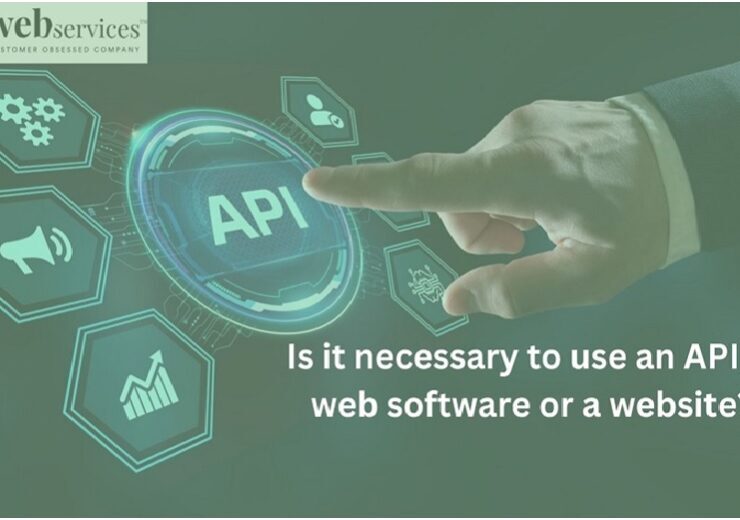How To Build A Multi-Vendor Shopify Marketplace App – Case Study
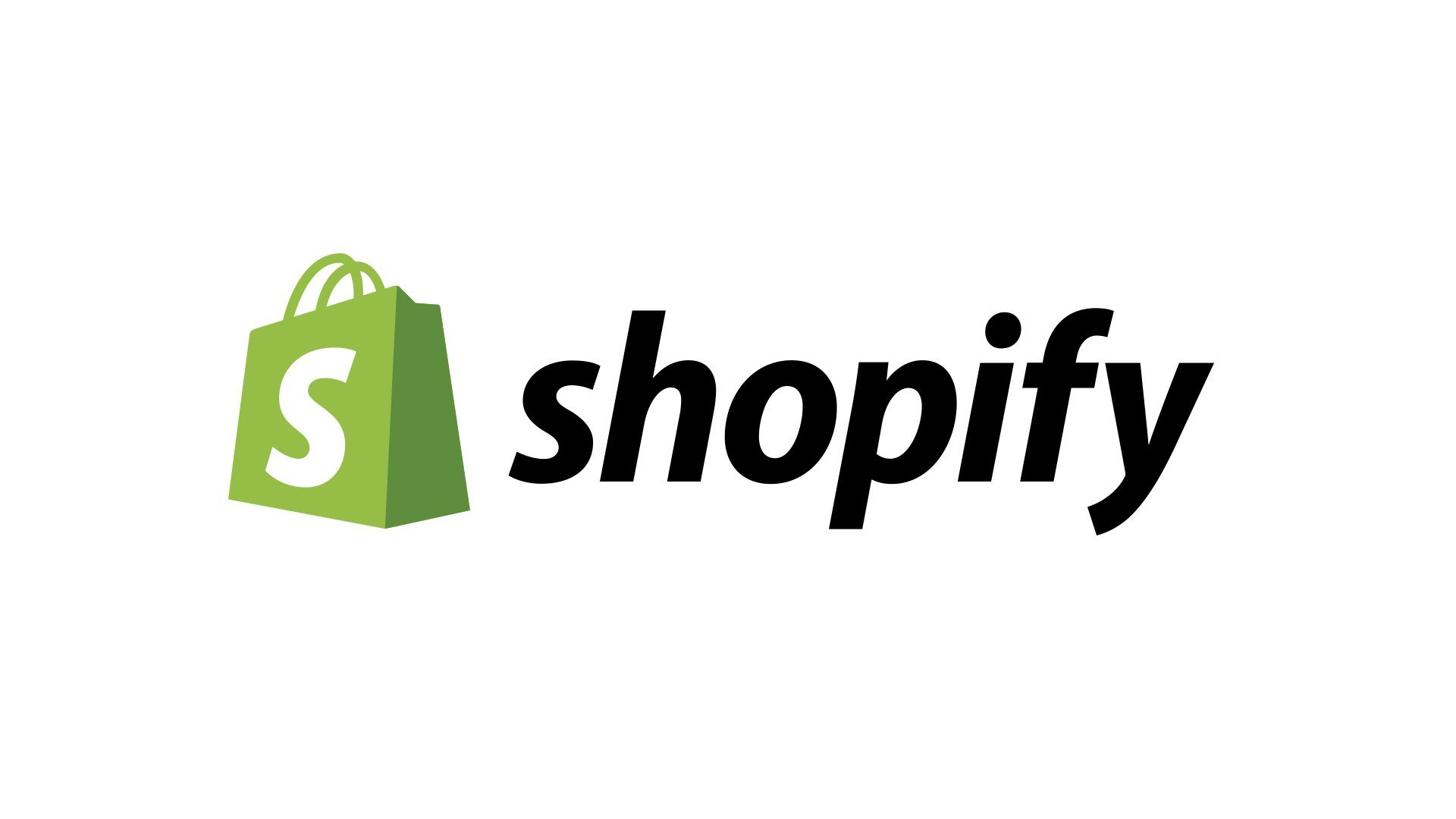
Shopify marketplace apps are no novelty anymore. They are everywhere and have been around since 2006 as part of Shopify, an instrumental eCommerce platform for retail point-of-sale systems and online stores.
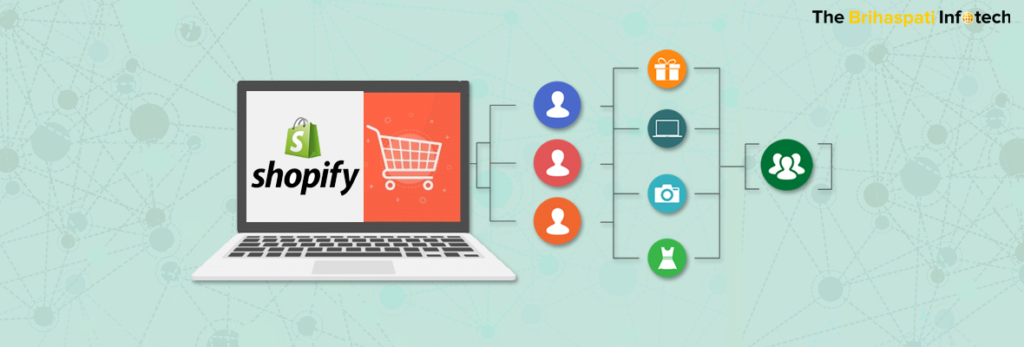
Shopify is a feature-rich, future-ready digital ecosystem for online sellers since it provides a user-friendly interface together with an exquisite range of tools to set up your online store. You can hire certified Shopify experts to get a full-featured online store that meets your expectations and unique needs.
With Shopify’s self-hosting services, you can push your store live right after a quick and easy initial configuration.
Though Shopify has covered a lot of good ground ever since its phenomenal inception, it still doesn’t provide the multi-vendor marketplace setup support as provided by the likes of eBay and Amazon.
It may be quite a spoilsport for Shopify lovers who want to capitalize on this dependable and versatile platform to launch a multi-vendor marketplace, but that’s the way it is.
Does it mean you can’t host a Shopify multi-vendor marketplace? Fortunately, no. With custom application development services, you can certainly build a multi-seller Shopify marketplace app and achieve your business objectives.
What is Shopify app development?
While most of us understand the concept of a multi-vendor app, let’s catch up. A multi-vendor marketplace app is an application that serves as a digital distribution platform or bridge to facilitate transactions between buyers and sellers.
For instance, eBay and Amazon are multi-seller apps wherein the sellers can upload their products and the visitors can purchase them. A multi-vendor application owner charges a predefined commission to the seller for each sale or on a subscription basis.
Such platforms are cherished by online vendors for the basic reason that they offer high benefits in terms of improved sales, user experience, efficiency, and convenience.
As of today, physical strategy businesses are not progressing as they should. Over 50% of the populace today surfs the web and invests their time in online locales instead of visiting physical stores to make a purchase.
Therefore, the clients these days are more willing to go online with a multi-seller web-based business that they can operate from just about anywhere as they will receive an assortment of merchandise from different vendors at a single stop.
These online stores provide better returns on your time, money, and energy as compared to opening a brick-and-mortar store that shoppers seldom visit these days.
Though several technologies can help you build a multi-seller app, Shopify is the most preferred option due to the wide range of features and merits it has on offer.
What can Shopify multi-vendor marketplace apps do?
Shopify multi-vendor marketplace apps provide your website with rich functionalities to offer vendors an easy way to access your website’s backend, with no admin controls. From the backend, vendors can quickly add, categorize, edit, and remove their product listings from your website.
Besides, the app helps you set up commissions that the vendors will pay for using the online store either monthly, annually, or on a per-sale basis.
Why is a Shopify multi-vendor marketplace app so important?
With customers increasingly counting on online shopping, ecommerce is opening new possibilities for countless entrepreneurs. Nasdaq predicts that around 95% of purchases will be done online by 2040 and, therefore, entrepreneurs have a serious reason to try their hands at eCommerce. And when we talk about eCommerce, multi-seller platforms are the new norm.
Due to the phenomenal surge that the eCommerce multi-vendor marketplace has witnessed over the last decade or so, having a multi-vendor architecture has almost become a necessity.
Gone are the days when a single business owner used to set up an online store, showcase his line of products, and drive sales almost single-handedly. The multi-vendor approach is the next fascination.
Due to the formidable business competition that the eCommerce niche has at present, just building an online store or eCommerce app is not enough for merchants to survive or thrive. In this always-online age, profits and sales are driven by user interactions and communities. Therefore, the need to have a multi-vendor mindset was never more urgent.
How does a custom multi-vendor Shopify marketplace work?
You can get started with this smarter, better eCommerce marketplace in three simple steps:
- Create a custom Shopify multi-vendor app to transform your online store into a marketplace that is 360-degree functional.
- Once you push the store live, invite other businesses to collaborate with your Shopify marketplace app to display their merchandise digitally in an organized manner to ensure customers can search, browse, and purchase their products.
- Keep a track of all sales and set a commission for each sale to earn from your local as well as global sellers.
Merchants can also use these multi-vendor online marketplaces as a launchpad to create and enhance their online presence. This helps them earn recurring sales and loyal customers.
Shopify’s app library flaunts quite a few marketplace apps to help you convert your online store into a full-spectrum digital marketplace; however, there’s a catch.
If you have a unique product niche, plan to add some out-of-the-ordinary products at some stage moving forward, or have potential sellers from a diverse business genre, going with a strict, predefined architecture may not be a good pick.
Such solutions may not provide you the factor of flexibility in terms of adding customizations as required by you or the vendors selling their merchandise on your platform. It’s like you’ll be handcuffed with a restricted reach, and that’s surely the last thing you’d ask for.
Case study of a custom multi-vendor marketplace app development
Our Shopify app development, The Brihaspati Infotech, recently helped a client achieve his dream of hosting a revolutionary online store that can fit in his budget, entice the audience, perform seamlessly, and cater to the rapidly-changing expectations of his vendors.
Our Shopify app development team delivered a multi-vendor marketplace on time and within budget.
Here’s the case study:
Client requirements
The client had an online liquor-based multi-vendor Shopify marketplace app.
The client had the following requirements:
- Enable other liquor vendors to sell their products through his app
- Properly categorize all store products
- Integrate 24×7 live chat on the store
While the requirements were pretty straightforward, implementing the solution on an active Shopify store with a quick turnaround time wasn’t anybody’s game.
Therefore, the client decided to hire Shopify developers from us.
The solution
Our development team divided the whole project into two parts, namely:
- Interface for the store owner
- Interface for vendors
Doing this on an open-source platform like Magento would have been easier. However, in Shopify, we had no scope for intervening with the base code. Therefore, we created separate interfaces and used them as embedded apps at the back-end panel with iframes to build the marketplace app.
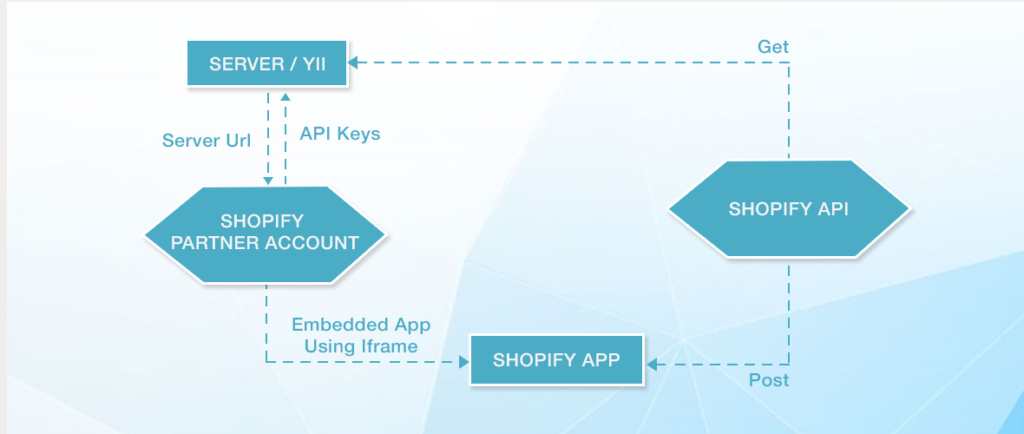
With Shopify APIs and webhooks, we can POST and GET data “TO and FROM” the Shopify website to the custom-built interface.
We used Yii/LAMP technology stack to build the interfaces. The store owner interface was hosted as a Shopify app on the client server and linked to the Shopify website using the client’s Shopify partner account.
The vendor interface was hosted on a sub-domain of the store owner’s website and vendors were able to access it by logging in with their vendor accounts in the multi-vendor marketplace Shopify app.
Features for Shopify App Development Solution
Working agile, our Shopify app development team came up with a secure, easy-to-use, and fully functional multi-vendor Shopify app. The solution was tested vigorously for functionality, performance, and user experience.
The Shopify app development solution we delivered had the following salient features:
Comprehensive, easy-to-use seller dashboard
We delivered a crisp, clear, and clean interface for the dashboard landing pages. The dashboard helps the client get a real-time overview of the number of products, orders, buyers, and messages received by the seller.
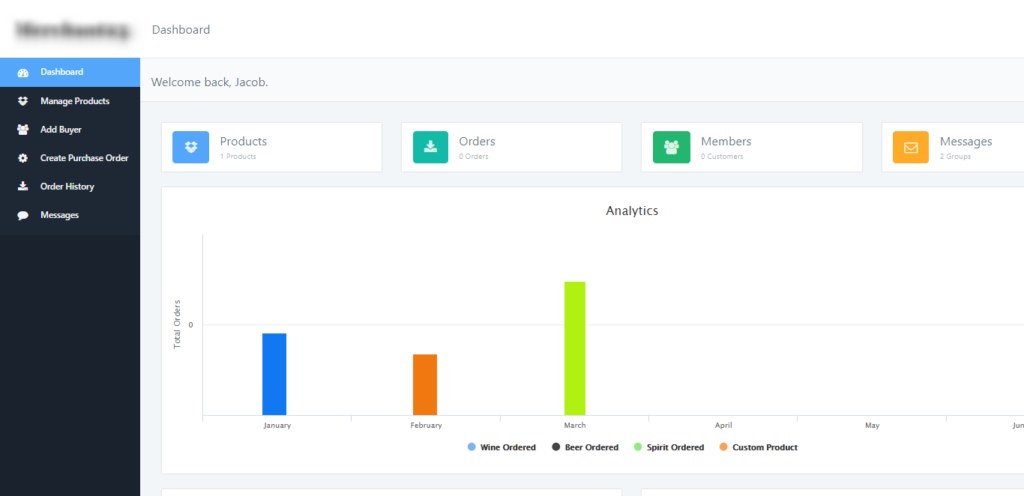
Also, the dashboard flaunts an overview in the form of a bar graph powered by HighCharts for dynamic chart implementation.
Several powerful functionalities and features were provided for the seller, including options to add new products, review buyer and order history, view purchase orders, and interact with buyers through instant messaging.
Immersive, easy-to-use admin interface
Our Shopify app development company used an embedded app module to help admins access their admin interfaces through the default Shopify admin dashboard.
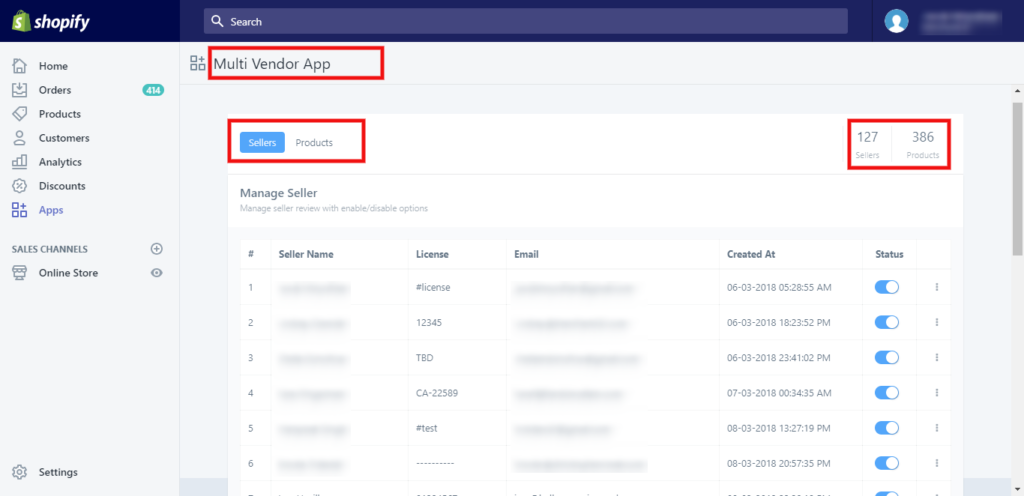
Our Shopify app development company deployed Shopify APIs to sync the customer data, orders, and products efficiently with the default Shopify database.
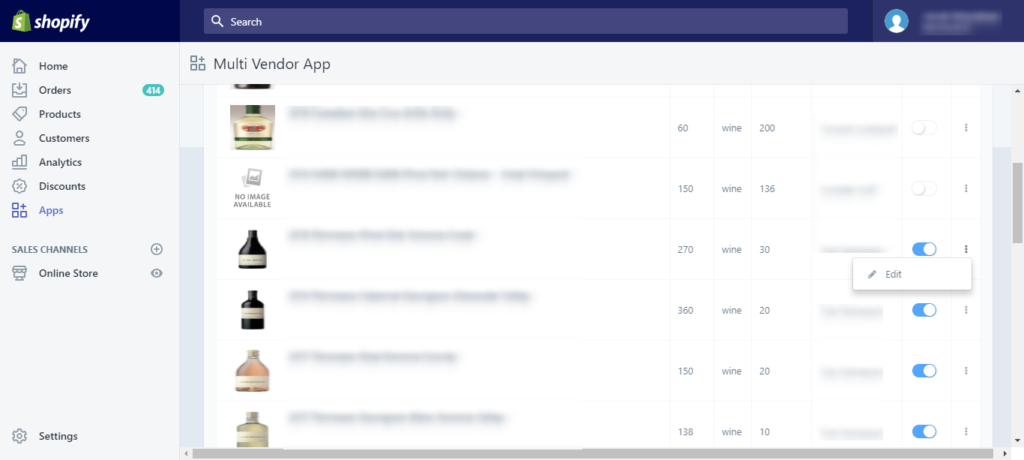
The store admins can simply launch the Shopify multi-vendor app within their Shopify dashboard to manage seller accounts, submitted products, and a lot more.
Major challenges and roadblocks during the development process
Though we’ve successfully developed quite a few multi-vendor Shopify apps, each project has new challenges based on the client’s unique requirements, budget, time, technology, existing architecture, etc.
This project had its share of challenges such as:
1. Custom nested product filters
We created nested filters such that selecting one filter affects the option of others in the Shopify app development plugin. However, doing this with the default filters available in the Shopify backend was not possible.

We resolved the conundrum with separate product creation forms, providing a unique form for each collection. Furthermore, we created product tags to be used as filters.
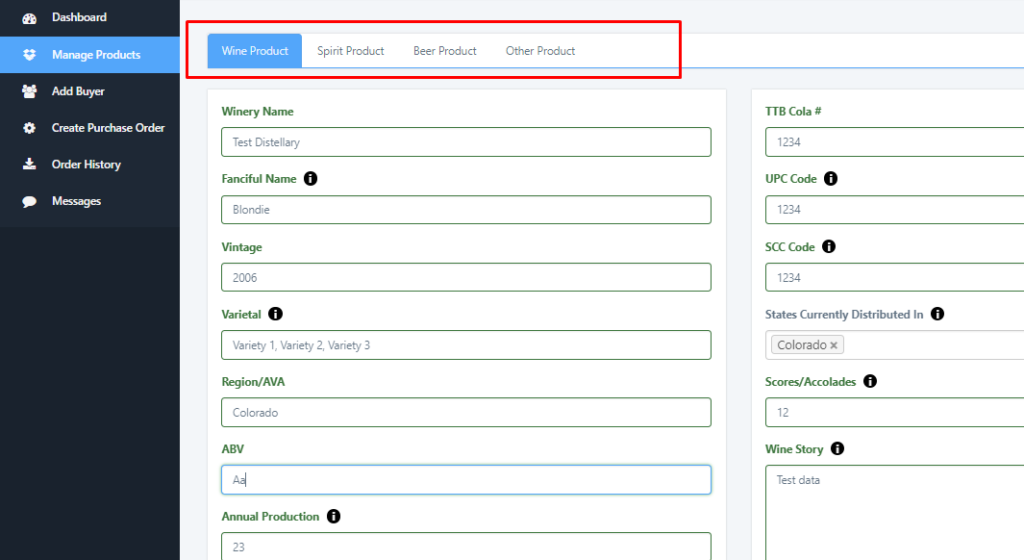
Based on predefined product categories, tags were created for each product type
Predefined product categories were used to create tags for each product type based on which the filters showed relevant data. The tags were added automatically and were visible to store admins.

As we used Yii under the MVC architecture to create the forms, they were easy to enhance and modify as per the client’s business needs. The plugin also remains adaptable to changing business requirements.
2. Creating a live chat
The client wanted live chat functionality for real-time user interaction on the multi-vendor Shopify app development module. Furthermore, the client wanted all chats to be saved on the backend to help the buyer pick up a conversation from where they dropped it earlier.
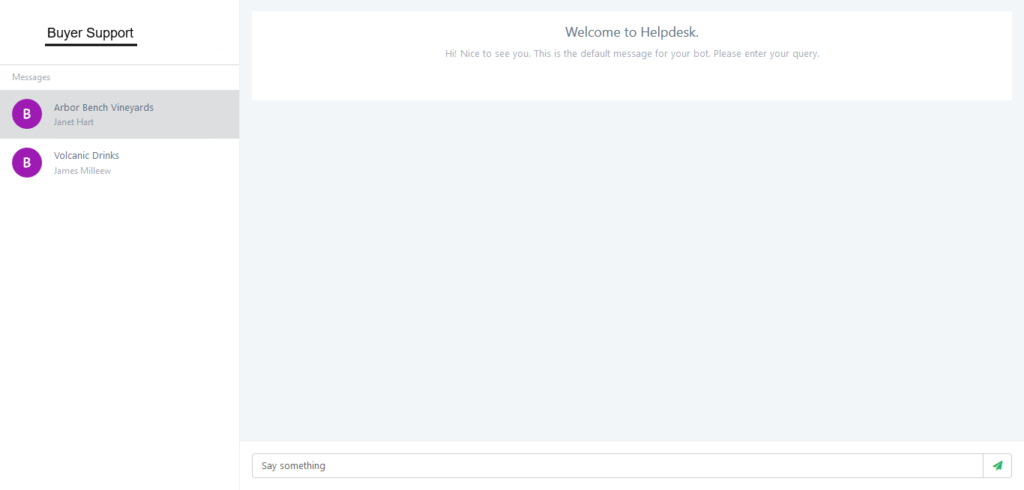
The seller can keep a track of new, ongoing, and past chats under the Messages section.
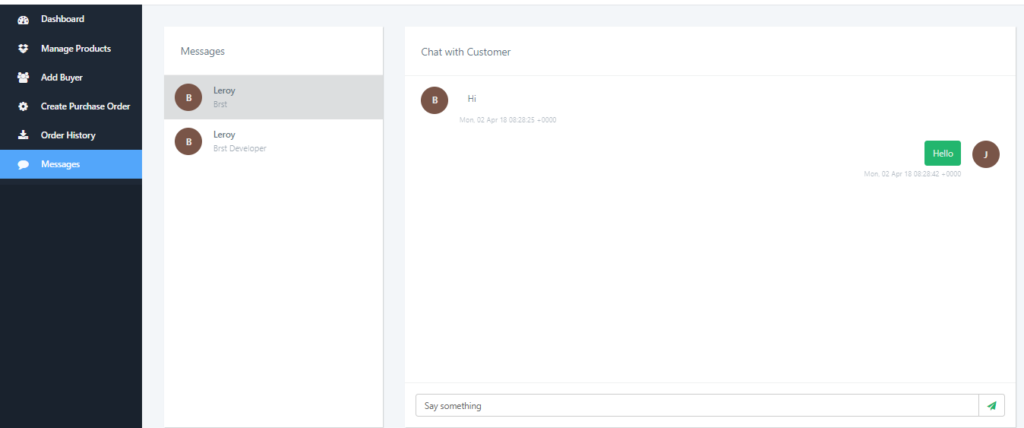
For this, we used Chat ID as a unique identifier for each conversation. The Chat ID helped identify who has sent a message and then display it under the corresponding User ID.
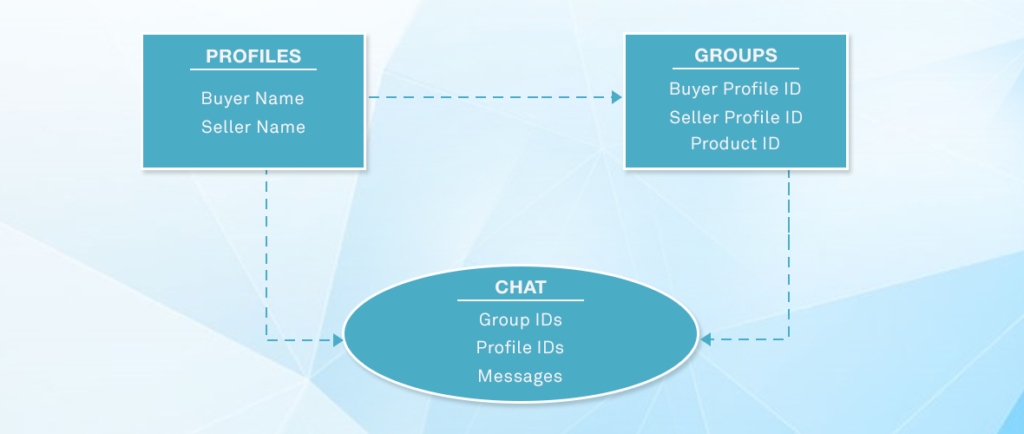
Using this approach, not only were we able to implement real-time one-to-one chat, but we were also able to save and access the chat record between buyer and merchant in the database.
3. Real-time sync of Shopify and seller database
As the multi-vendor marketplace, the Shopify app had the seller dashboard as a separate interface developed in Yii and hosted on a separate server, the solution had to make sure that whenever a seller creates a new product, it is simultaneously created in Shopify as well.
For this, we used the Shopify console runner to work in the background and call the Product API each time someone adds a new product. It helped us implement a real-time data synchronization between the Shopify and seller dashboard.
Case study summary and result
The Brihaspati Infotech delivered a stable and dynamic Shopify marketplace app to the client on time and within budget. The solution helped the client regulate and manage their business on various levels, improve efficiency, and save time on repetitive tasks.
As we have successfully delivered several similar solutions such as a Shopify Payment Gateway Integration, the turnaround time for this Shopify multi-vendor marketplace app was quick and all the client requirements were completely addressed.
We delivered a feature-rich solution with various high-end functionalities, such as:
- The ability for sellers to define custom shipping methods and tracking IDs
- Integration with Hubspot
- The ability for admins to define a commission rate
- Scalable and customized dashboard
- Real-time data sync between the Shopify and seller dashboard
The project met our criteria of 100% client satisfaction with seamless communication, project transparency, regular updates, stringent testing, and after-sales support.
Few words about us
The Brihaspati Infotech is a 360-degree Shopify app development services provider to startups, SMBs, and enterprises. Our solutions are tailored for your unique business needs and aimed to accentuate practically every square inch of your business and ultimately help you max out your ROI.



